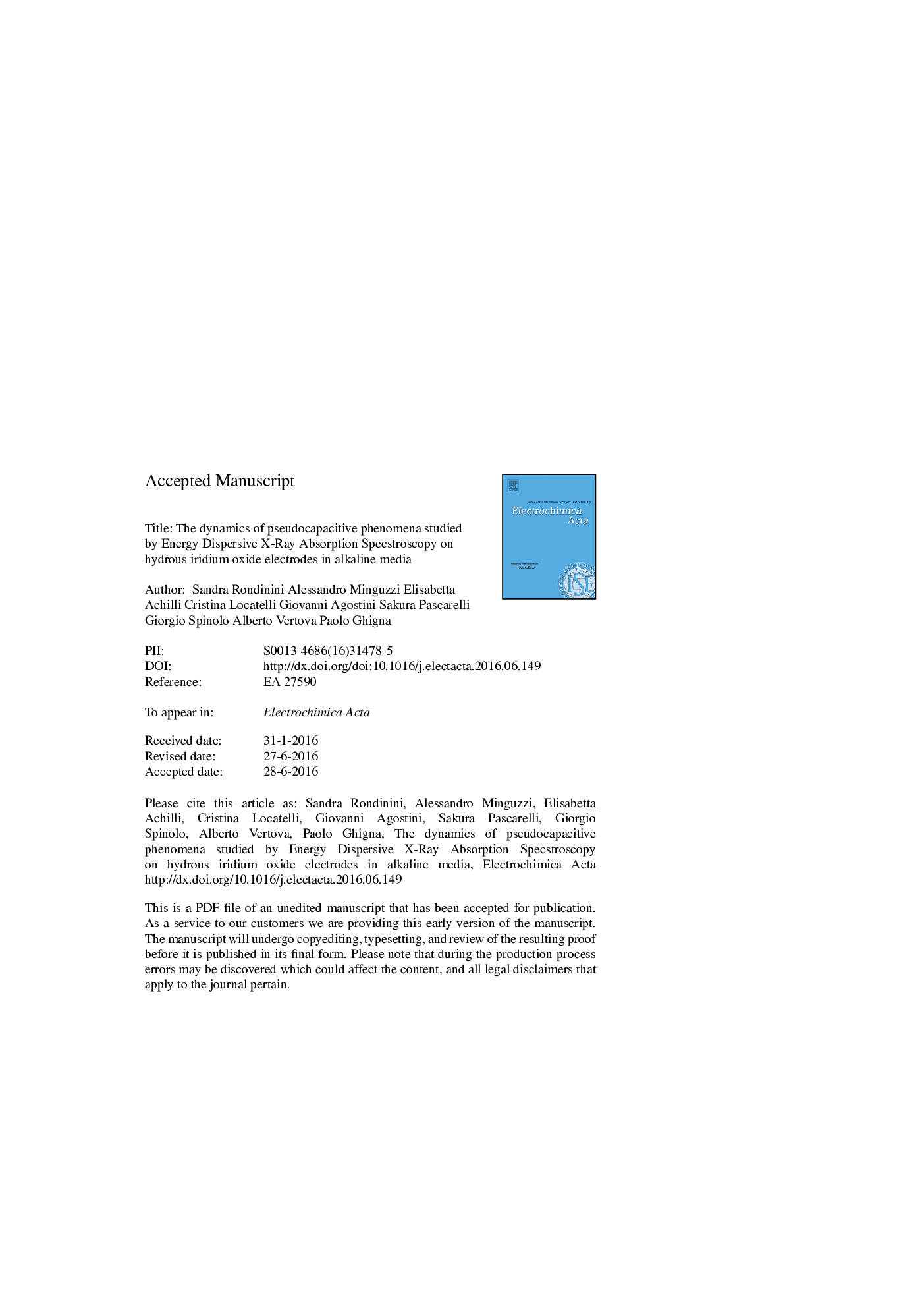| Article ID | Journal | Published Year | Pages | File Type |
|---|---|---|---|---|
| 6605944 | Electrochimica Acta | 2016 | 23 Pages |
Abstract
The behavior of highly hydrated IrOx porous electrodes under potentiostatic conditions is studied by operando time-resolved Energy Dispersive X-Ray Absorption Spectroscopy (EDXAS) at the Ir LIII edge. The potential steps are selected in order to drive the electron and charge transfers into the Ir(III) â Ir(IV) and Ir(IV) â Ir(V) transition domains. The adoption of sodium hydroxide aqueous solutions provides the best conditions for the potentiostatic control of the iridium oxidation states, as evidenced by the two well-separated, symmetric peaks observed in cyclic voltammetry. The intrinsic time resolution of ca. 10Â ms implies the acquisition of 10000-20000 spectra per run, prompting the introduction of an effective procedure for treating this large number of data for analysis and comparison with the chronoamperometric response. The combined treatment of electrochemical and XAS signals mutually supports the working hypothesis of full complementarity between the two techniques, that allow observing the pseudocapacitive reactions and its time evolution even in the presence of possible parasitic side-processes, and highlights the XAS features to be used as effective kinetic parameters.
Related Topics
Physical Sciences and Engineering
Chemical Engineering
Chemical Engineering (General)
Authors
Sandra Rondinini, Alessandro Minguzzi, Elisabetta Achilli, Cristina Locatelli, Giovanni Agostini, Sakura Pascarelli, Giorgio Spinolo, Alberto Vertova, Paolo Ghigna,
